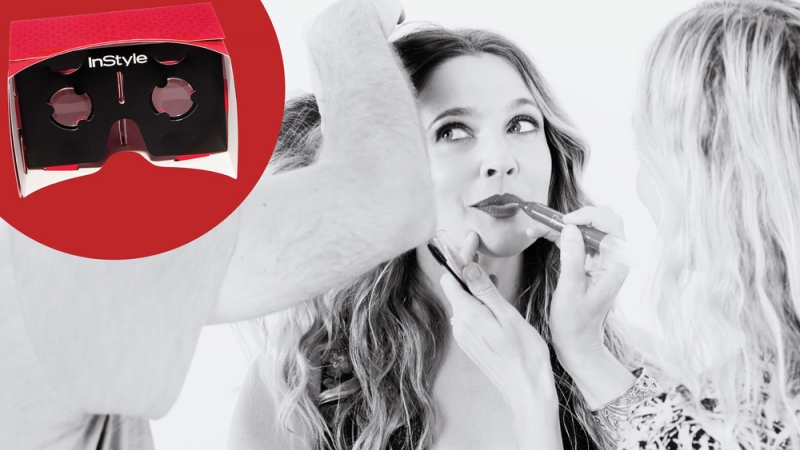Virtual Reality and Fashion
Virtual reality (VR) has long been a dream for many. Now, with powerful smartphones, games consoles, and computers being so widespread, that dream is starting to become a reality.
In the world of fashion, some organisations are beginning to use VR to give enthusiasts a glimpse of what happens behind the scenes.
InStyle editorial director Ariel Foxman, for example, chose to use the Jaunt VR app to allow readers to experience first-hand the magazine’s November cover shoot with Drew Barrymore.
So how else can VR be used in the fashion industry? And what will be the result?

The promise of virtual reality is to allow normal people to immerse themselves in things they wouldn’t normally be able to experience, and this means big business.
As Benoit Pagotto, Brand Consultant and Partner at iVRNation, puts it,
VR is expected to be a $150 billion industry by 2020 and overcome mobile, growing out of its gaming roots and transform industries in a major way: by making the more interactive, immersive, and imaginative.
Oculus Rift is a soon-to-be-commercially-released virtual reality headset which places users in almost any conceivable situation.
Gamers are excited about the potential of Oculus Rift to transform and improve the way they play. And, by combining Oculus Rift with other virtual reality technology, like Virtuix Omni walking platform, gamers can be thrown into almost any conceivable situation.
But Oculus Rift is already being used by the fashion industry. At London Fashion Week 2014, Topshop collaborated with 3D agency Inition to allow fans to virtually experience what it’s like to be in the front row of one of their catwalks.
As Benoit says,
[VR] actually makes you feel like you were there, you believe in what you’re seeing, you feel immersed.
By combining Oculus Rift with live streamed HD footage and 360-degree photography, fans were able to wear one of the five headsets placed in the window of the brands flagship Oxford Circus store and experience something that they may never have otherwise seen.
And Rebecca Minkoff attempted to do something similar in last month, though on a much larger scale, when the brand sold $24 cardboard headsets – to be used in conjunction with the Jaunt VR app – that, after a quick assembly, could be used to experience the final walk of the Rebecca Minkoff’s Fall 2015 show.
The headsets sold out quickly, and the brand was lauded for its ability to bring the runway experience to anyone in the world, leading some to claim the VR and fashion are an especially well-suited couple.
Dior, too, are making moves into VR. The company created Dior Eyes, its new virtual reality headset to give consumers an ultra-immersive backstage experience of one of its catwalks. The headset was designed entirely by Dior’s own workshops, and features state-of-the-art VR tech.
Fashion is sometimes seen as elitist. But VR technology gives brands the opportunity to share what have traditionally been moments witnessed only a select few to the masses. For this reason, I believe that we can expect to see more collaborations between VR and fashion. At least I certainly hope so.
And so does Benoit:
Using VR and real time 3D, you’re able to look and discover all the details of an object. But more than a high end virtual show-rooming experience […] VR allows to truly being the product stories to life, in ways never possible before.
What do you think of the use of virtual reality in the fashion industry? And is it always a good thing for fashion brands and companies to aim to reach a wider demographic?
Email us your thoughts.
